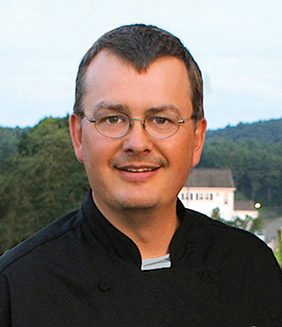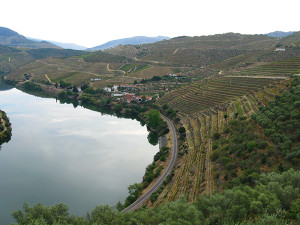
By Brian Mitchell, Guest Columnist
With the colder weather comes the opportunity to build added on-premise sales with a cold-weather go-to such as Porto: the key is making sure your bar and service staff takes advantage of it. This is done through regular training, as product knowledge and product wisdom are factors for higher sales.
PORTO PRODUCT KNOWLEDGE
With the colder weather comes the opportunity to build added on-premise sales with a cold-weather go-to such as Porto: the key is making sure your bar and service staff takes advantage of it. This is done through regular training, as product knowledge and product wisdom are factors for higher sales.
• Porto is fortified — Brandy added during the making halts fermentation and leaves sweetness from unfermented sugars. Thus, we know Porto to be a sweet wine often served after dinner.
• Typical alcohol for Porto is about 20% abv.
• Service portions are usually half (2- 3oz pour) a normal glass; use regular wine glasses to fully enjoy the aromas—undersized port glasses are unnecessary.
• Real Porto comes from the Douro River Valley located in central Portugal. This is a unique region with steep hillside vineyards, poor soils and intense weather, which contribute to the quality and style of the wines.
• The term Porto is used by authentic Port wine producers to denote their wines in the U.S. market, separating them from Portstyle wines by non-Portuguese wineries. In the U.S., some wineries continue to confuse consumers (and staff) by ignoring European Union (EU) appellation protections. My suggestion is to sell only authentic Porto.
• Porto is wine—higher alcohol helps, but once opened (and unless using gas) a bottle of Porto is good for 2 – 4 weeks. Vintage, only a week, tops. Put Tawnies in the fridge.
PORTO PRODUCT WISDOM

The Douro River and Quinta de Vargellas, home to Taylor Fladgate. Photo taken by Mitchell on a visit to the port producer in 2011.
Traditional wine education breaks Porto into wood- and bottled-aged categories. For service staff this is a limiting explanation, especially for practical selling. I prefer to choose wines based on pairing style, overlapped with value and practicality.
All Porto is wood-aged to some degree, making this a less important selling point to dwell on. Focus on the flavors and how to pair/recommend with food. Here is a breakdown of my go-to categories:
Basic Ruby / Tawny Porto
• Very Affordable—aged for a shorter period, then blended, bottled and sold. Good, but rarely exceptional quality. These are simpler wines and can be a good choice for a general bar-set. (I often by-pass for the
next group.)
Reserve Ruby, Late Bottled Vintage, 10- year and 20-year Aged-Tawny
• Moderate Price / Tremendous Quality— plus great complexity and immediate satisfaction result in a superb value. These four can be carried as standard selections and should be the bulk of on-premise sales:
Reserve Ruby—delivers a fruit forward impactful style; aged for 4-5 years, but no age designation, a good reflection of producer style.
Late Bottled Vintage (LBV)—complex, smooth and rich; aged between 4-6 years and ready to drink. Made in a single vintage, these wines can add a premium element to a program.
Pair above wines with fruit or chocolate based dessert and stinky cheeses
10-year and 20-year Aged- Tawnies—smooth, rich flavors, and some of the best values in Porto, period. More a style designation and less a true age statement; are blends of younger, more expressive wine, with older (in some case very old) wines for added complexity.
Have these with honey, nuts and pastry desserts, or chilled as an aperitif.
Specialty Styles
• Vintage—from a declared, very high quality, vintage (usually 3-4 per decade), but only aged 18-24 months prior to release. Often needs minimum ten years to approach drinkability; not great for many wine
programs.
• Single Quinta Vintage—a Quinta is a wine farm. This category is often a superb value, as the wines can sell for half the Vintage wine but usually need a bit less time to hit optimal drinking. A better choice for up-scale programs.
• Older Age-designated Tawnies—30 or 40- year is most common; can be quite complex and expensive, but deliciously nuanced.
• White Port—light, refreshing, perfect for warm weather drinking or craft cocktails.
• Colheita—a Tawny port from a single vintage. Small but interesting category; must be aged for a minimum of seven years. Delicious and can add to an upscale by-the-glass program.
Knowledge is just as in season as Porto.
Brian Mitchell is the Corporate Beverage Director for the Max Restaurant Group. He has been in the Beverage Industry for over 20 years, specializing in sales, service and training. Follow him on Twitter @VintageVino and VintageVino.net.




